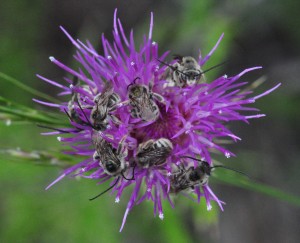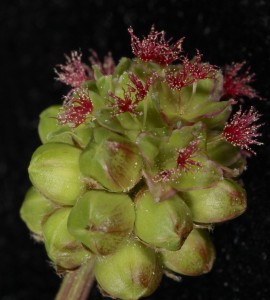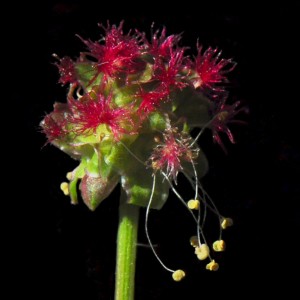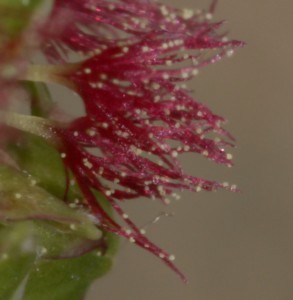My wife and I set off to go shopping. Before we had gone a hundred yards we noticed a woman standing beside her parked car, waving her hands. We decided to find out if we could help. I got out of the car and went to the woman. She was clearly in distress. She couldn’t get the car started, and asked if I had jumper cables. I did not. I proposed that we call AAA. Then I noticed that there was a second person in the car, an older woman in the passenger seat. It turned out to be the woman’s 98 year old mother, getting kind of hot and bothered in the near 100 degree heat. After some discussion I learned that they were delivering a thank-you box of chocolates to friends who lived very near us (just three doors away as it turned out). Louise and I turned our car around, picked up the two ladies and drove them to the house they had been aiming for. The owners came to greet them, and I could see that their troubles were over. Louise turned to the mother and said: “You might live to be a hundred!” The mother looked back, scowled and said, in a strong gravelly voice: “ I hope note!” Smiling, we went on our way.
Monthly Archives: September 2013
AN AMAZING INVISIBLE FLOWER
INVISIBLE FLOWERS
If you walk up the hill to enjoy a meal at the Iron Door Restaurant in the Catalina Mountains, you may not notice plants scattered among the clumps of grass. And even if you did, you might not realize that the plants were in full and glorious bloom. The plant is in the rose family, and has very unusual flowers.
The flower head consists of a number of little capsules, each packed with anthers, with long filaments ending in a yellow stamen. The stamens are the male parts of the flower and are loaded with pollen. When the time is right the capsules burst open and the male flowers hang down on their thin threads. The beautiful red female flowers are mostly on top. When they open up they look like something growing in a coral reef.
of little capsules, each packed with anthers, with long filaments ending in a yellow stamen. The stamens are the male parts of the flower and are loaded with pollen. When the time is right the capsules burst open and the male flowers hang down on their thin threads. The beautiful red female flowers are mostly on top. When they open up they look like something growing in a coral reef.
Here we see the flower head with the female flowers at the top. These heads are less than an inch in diameter.
In this picture we see the anthers popping out of the little capsules.
And here is a close-up of the female flowers.
The plant is called Small Burnet. Its leaves are used in salads, so it is also called “Salad burnet”. The botanical name tells of the medicinal use of the plant – sanguisorba (meaning blood absorbing). The species name is minor. There is another larger sanguisorba, (Sanguisorba major) but I have not met that one. Small Burnet is a delightful plant, easily passed by because of the nearly invisible flowers.
ANOTHER GRAND CANYON PAINTING
MULTIPLE FLOWERS
September 4, 2013
COMPOSITE FLOWERS
Hiking in the mountains we see lots of flowers in the composite family – the Asteraceae (from the Greek word for a star – since the flowers usually have a center, and parts that radiate outward). Close examination reveals that what looks like a single flower is really a collection of tiny flowers. In the typical daisy form, the parts that look like petals are actually flowers that radiate outward, and are called ray flowers. The center is packed with flowers called disc flowers. One of my favorites is Desert Marigold (Baileya multiradiata) The genus is named after William Whitman Bailey (1845-1914), and the species – multiradiata, means “having many ray flowers”, as this picture shows.
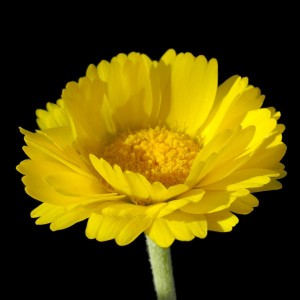
I took one apart, and spread it out on a piece of black velvet. By my count there are about 50 ray flowers, and 200 disc flowers in this one flower head. The disc flowers usually grow in a spiral, with the outside flowers opening first. This explains why these flowers stay in bloom so long, and why bees and other insects can visit the same flower so many times. They know that it is not one flower, but hundreds of flowers, opening over an extended period. 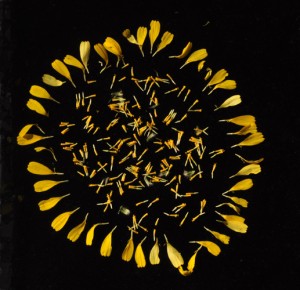
Thistles are also composite flowers, but they have only disc flowers. On a recent walk with my family on Box Camp trail in the Catalinas, we came across this thistle (Cirsium wheeleri), with some kind of flies having a party on the flower head. There was plenty of food for all. 